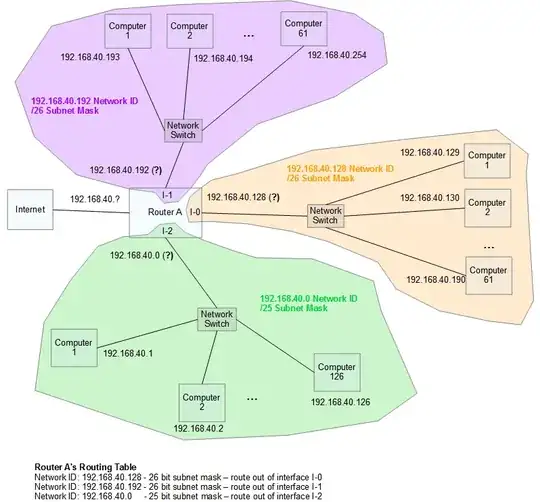What is the IP address(es) of the router in my picture?

In my picture, you can see that I have question marks next to the router's interfaces, because I'm not sure if those are right. Can someone help me out here?
I drew this picture after reading this: https://serverfault.com/a/226445/228651. It is a diagram of how I think the router and subnets described in that link would be laid out. Basically, there is a subnet with network ID 192.168.40.0 and a subnet mask of 255.255.255.0 (/24). That subnet is divided up by Router A which handles traffic to and from 3 of its own sub-subnets.
Perhaps I'm missing something fundamental, but I'm of the opinion that the router does not even necessarily need an IP address(es). Other routers/network switches that connect to this router just need to know the IP address of the final destination device, and use its own routing table to decide which of its own interfaces to send packets out of (the IP address of the intermediary router at the other end of that interface would be unnecessary information).